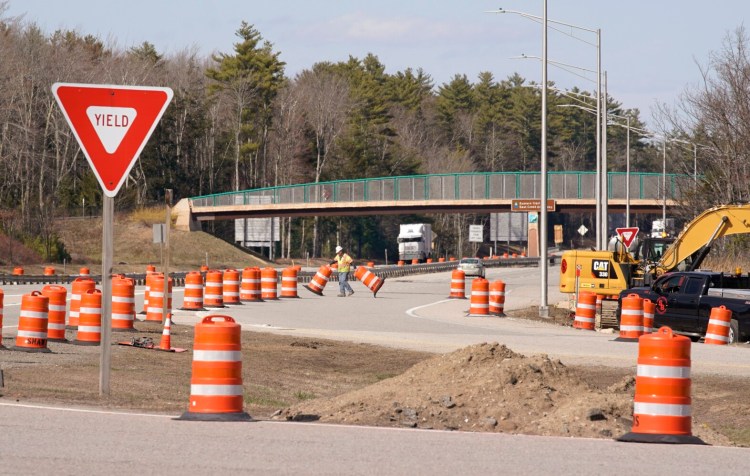Traffic in Maine is down to about half its normal volume, meaning road crews can speed up repair projects and shift more of the work to daylight hours, which is less costly and safer.
The Maine Turnpike Authority, for instance, will allow crews to shut down two lanes of traffic in Kennebunk for about 18 hours a day this week to install a culvert under the highway. The initial plan had been for the lanes to be closed for about seven hours a day, all overnight, to avoid worsening rush hour traffic.
“We wouldn’t do this during normal situations because traffic would be so bad,” said Erin Courtney, spokeswoman for the turnpike authority. Because of the work, traffic will be down to one lane in both directions near the Kennebunk service plazas at least part of the time, she said.
Turnpike traffic has been running at about 50 percent of its normal volume this spring, Courtney said. That means the lane closures, which had been expected to run from 10 p.m. to 5 a.m., will now go from 7 p.m. to 2 p.m. without as many worries about tying up traffic.
The longer work days and accelerated schedule also mean crews will be able to install new pavement as part of the project. That work had been expected to take place in July, she said, with crews returning to the site this summer to put down the new surface over a temporary patch.
The state also is accelerating some roadwork. For instance, the replacement of the Grist Mill Bridge in Hampden, which carries traffic from Route 1A and Route 9 over the Souadabscook Stream, is getting underway about two months ahead of schedule because statewide traffic is down on par with the turnpike – about half its normal volume, said Paul Merrill, spokesman for the Maine Department of Transportation.
Merrill said the work had been planned for early summer, after schools let out for the year, to avoid disrupting local traffic. But with schools closed, he said, the work began Monday.
“With school out now and traffic volumes down about 50 percent statewide, they decided to start now,” Merrill said.

A car and a truck move along a detour into the northbound Maine Turnpike service plaza in Kennebunk after the on-ramp was closed for construction on Tuesday. With lighter traffic, construction crews have been able to extend lane closures. Gregory Rec/Staff Photographer
He said other repair projects, including on the Falmouth spur, the Interstate 95 bridge in Kittery and Route 1 in Bath and Brunswick, can be shifted to daylight work. The department is evaluating other projects to see if they can be accelerated or shifted to daytime hours, he said.
Work done during daylight is typically more efficient and also cheaper, Merrill said. Contractors typically charge a 20 percent to 25 percent premium if forced to work at night.
Merrill declined to say how the state is handling the lower cost of projects with contracts that already have been issued.
“The work will be done faster, cheaper and safer – that’s the hope,” he said.
Courtney said the turnpike also benefits from lower costs if the work is done quicker. For instance, because the permanent paving will be installed this month instead of later, the turnpike won’t have to pay for additional inspections this summer.
She said turnpike travelers also will benefit from less disruption in travel, and the contractor’s costs may be lower, helping offset the extra costs that come with implementing social distancing work practices to discourage the spread of coronavirus.
Merrill also said there’s a financial downside to the falloff in traffic. Most road projects in the state are funded by a tax on gasoline. With travel down because of stay-at-home orders, gasoline use – and those tax collections – are also off, he said. The state expects revenue from the tax will drop by 40 percent, from $182 million to $108 million, over the next six months.
Send questions/comments to the editors.




Success. Please wait for the page to reload. If the page does not reload within 5 seconds, please refresh the page.
Enter your email and password to access comments.
Hi, to comment on stories you must . This profile is in addition to your subscription and website login.
Already have a commenting profile? .
Invalid username/password.
Please check your email to confirm and complete your registration.
Only subscribers are eligible to post comments. Please subscribe or login first for digital access. Here’s why.
Use the form below to reset your password. When you've submitted your account email, we will send an email with a reset code.